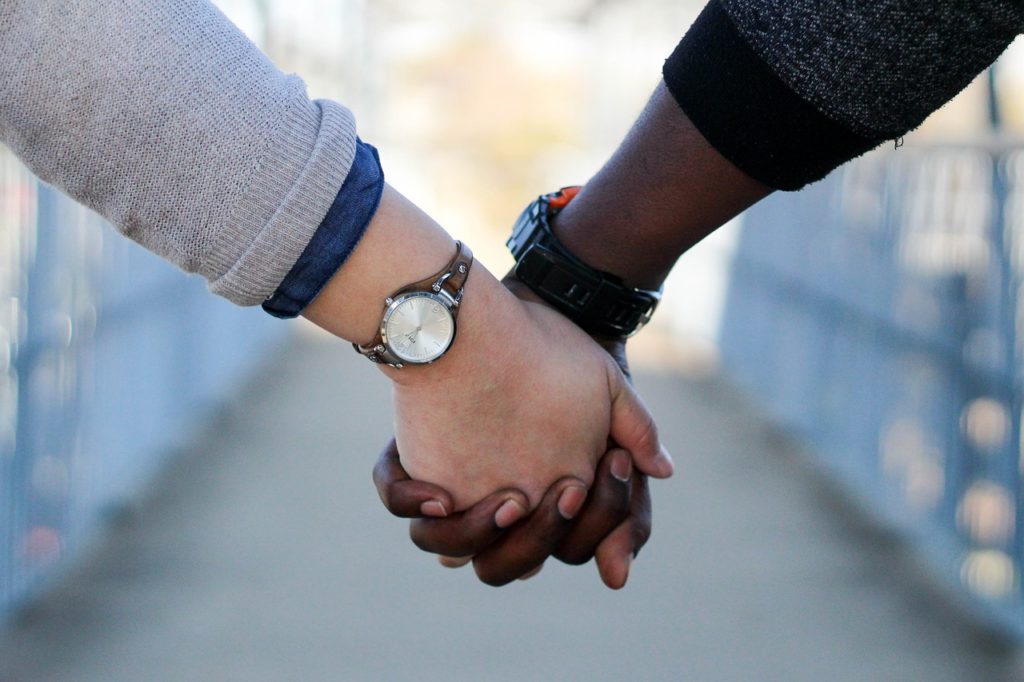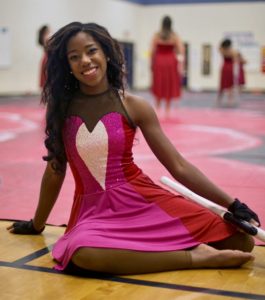This post may contain affiliate links.

There is a lot of overdue and much-needed conversation about diversity and inclusion in the marching arts community. Although this year has brought a lot of heartbreak for color guard (cancellation of WGI, cancellation of the whole DCI season, potential cancellation of some fall competitive, seasons), we’ve been given the opportunity reflect on the values that this activity promotes. A lot has come to light and now it’s our responsibility to hold each other accountable–that includes the head honchos at WGI, DCI, BOA, DCA, DCE, etc as well as the staff and judges in our local circuits. We can no longer turn a blind eye. Time to reflect and take responsibility for everything going on in your program.
Want some help on how to promote inclusivity for BIPOC students in your program? Here are some tips.
1. Keep different hair types and skin colors in mind when designing your program.
All too often I, as a POC, have been left out of this conversation. Makeup, hair, and costumes have always been designed with my white teammates in mind. This has resulted in makeup that doesn’t always look good on me, hair that requires excessive chemical processes to get right, and months (yes, months) of searching online for tights, shoes, and undergarments that actually match my skin tone. (And when those things aren’t found, taking the time to dye everything to match my skin). It’s a headache, and that’s an understatement. Need help finding tights and other materials that would be great for your BIPOC students? Check out my recommendations here.
2. Bring BIPOC in to teach, tech, and talk to your students.
In all of my years of schooling, Pre-K-receiving my bachelors degree, I have had 1 black teacher. ONE. Adding that on to the fact that there was no one that looked like in me in the media, I had very few black role models to choose from. I had no one to look at and say “they did it, so I can too”. While I adore the people that I am lucky to call my mentors, they are all white and don’t know the half of what I’ve had to face in my lifetime simply because of my race. Bring in BIPOC role models to help your students learn, grow, gain different perspectives, and nurture the belief that they can achieve whatever they want to achieve.
3. Make your program accessible.
Oh, here we go. The money conversation. We all know all too well how annoyingly expensive this activity is. It’s so expensive that it’s almost inaccessible to multiple groups of students who are passionate and more than capable of growing in colorguard. But honestly, why does it cost $6000 for a summer of DCI?! It’s ridiculous! I don’t care if it takes more time, find ways to help students march and lower your costs. Whether it’s through fundraisers, sponsorships, making your own costumes, recycling old materials, borrowing materials, partnering with local businesses and your schools wood shop to create your props, there are ways to lower the cost. It just takes a bit more time and research.
4. Challenge your own thoughts, beliefs, and perspectives (and encourage your students to do the same).
We all have beliefs that have been engrained in us from a young age. Evaluate those beliefs, and challenge them. It’s okay to be wrong. It’s okay to learn! It’s called growth–and if that’s what we’re asking of our students, why aren’t we willing to evolve with them? #characterdevelopment
5. Check yourself and those around you.
I kid you not, I have heard instructors during recruitment tell their members to “make sure you don’t recruit anyone who looks too poor for this team”. Like…What?! That’s not okay! You know what else isn’t okay? Discriminating based on weight, height, hair type, etc. These are PEOPLE with lives that you’re talking about! WGI began in 1978. Let’s make sure that the activity isn’t stuck in the 70’s, k? In addition, don’t be afraid to speak up when you see another staff member or instructor doing and/or saying something questionable. It is ABSOLUTELY your business and responsibility to make sure that students are being treated with respect. Being a bystander is just as bad as engaging in the behavior yourself. Check yourself and your peers.
6. Talk to your students.
By far the easiest and most effective way to learn about your students and what they’ve faced is to talk to them. Don’t forget, you’re not just teaching students to spin a flag, you’re teaching them life skills and how to be members of society. They look up to you, whether you realize it or not. Get to know them. Don’t be afraid to be vulnerable with them. The more you know them, the more you know how to best teach them. And what does that result in? A better team culture, happier students, skill growth, and CLEANLINESS. Yes, believe it or not, it translates.

